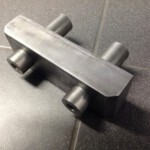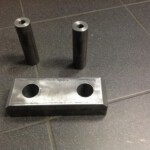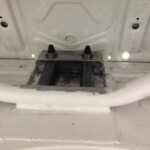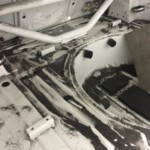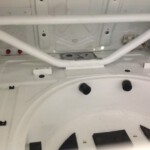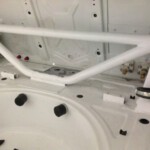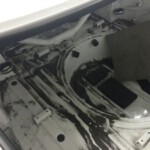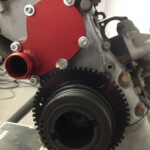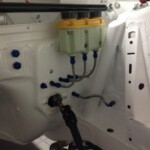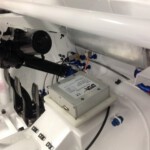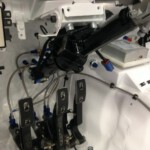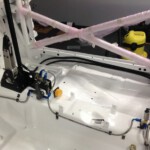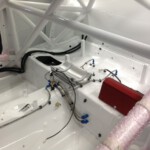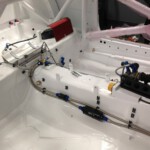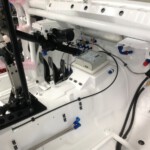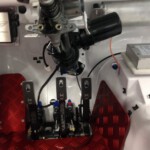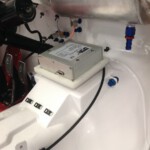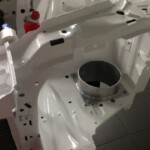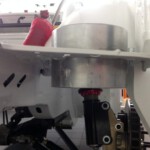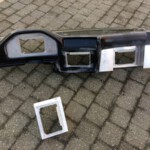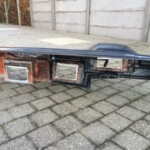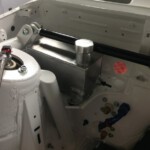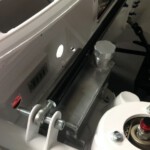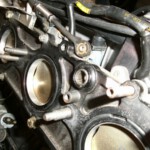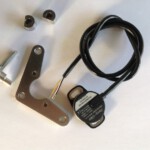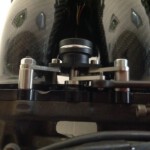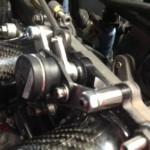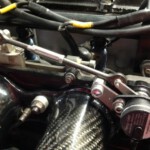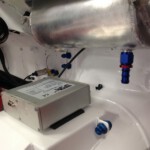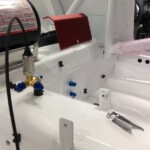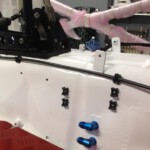We think that our crankshaft damper is cursed because initially the 60-2 trigger wheel was not correct lasered. WE had sent a wrong dxf where the spaces were not wide enough.
At arrival we immediately welded the index wheel on the BMW motorsport damper under local anesthesia (wrapped with wet towels) with our TIG welding device.
Everything worked out fine. The patient didn’t die on us but… the geometry was wrong !!
Because it was welded we tried to find anther VR crankshaft sensor that was able to cope with this geometry. We even found one at McLaren but we couldn’t afford us that one.
Bert proposed a good solution : wire EDM. After this process we were convinced that everything was ok now ; geometry : ok ; roundness : ok
We thought we only needed to put this on the engine.. Bosch spec stipulates we need 160.43mm diameter. Ok for us (we thought) But the water pump cover was very close to the wheel…
It was possible to take away 5 mm of metal and use a recessed bolt so we ended with 3mm of space.
Although it was already December the temperature rose in the R-box workshop because throwing it away was not an option.
All well that ends well.

